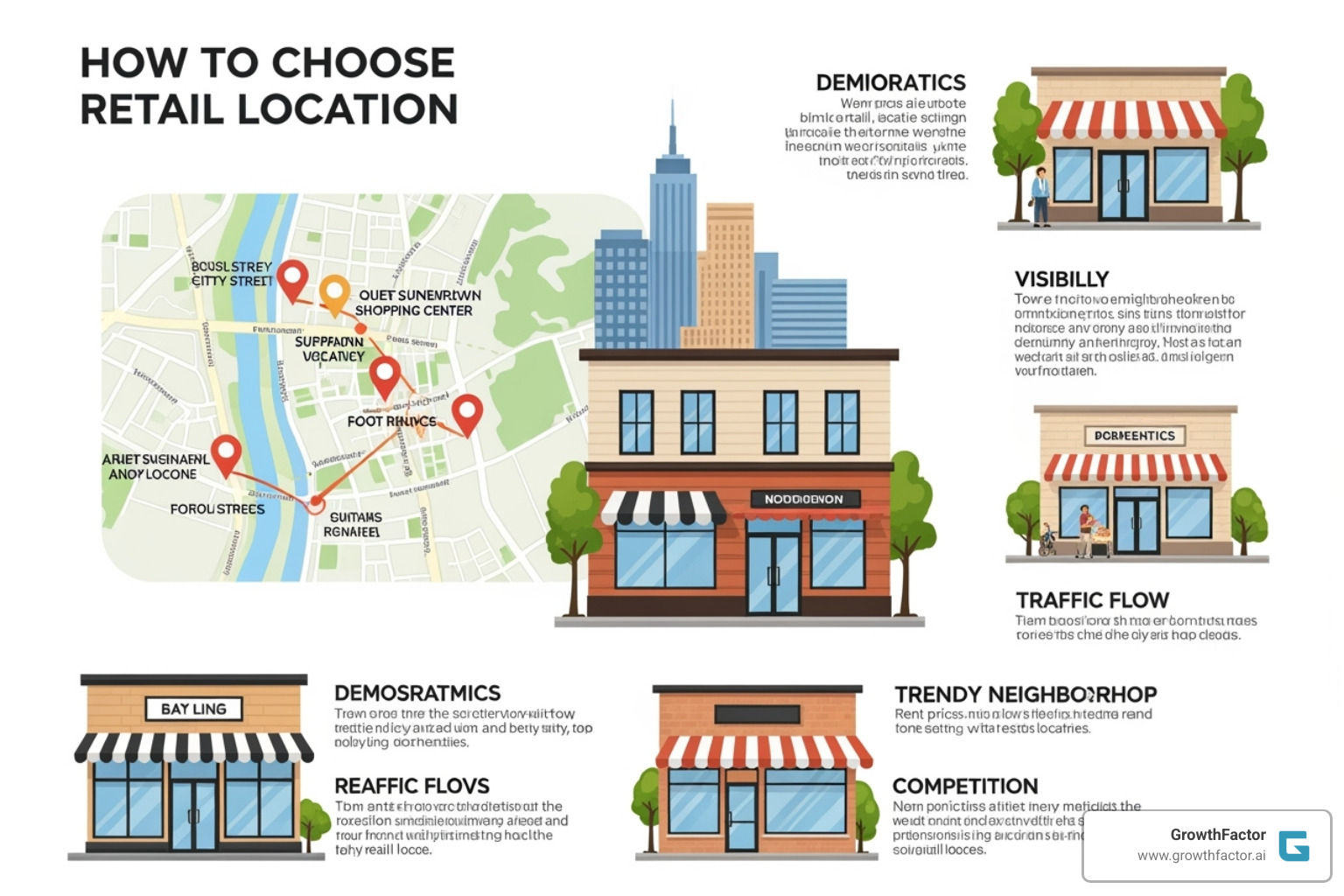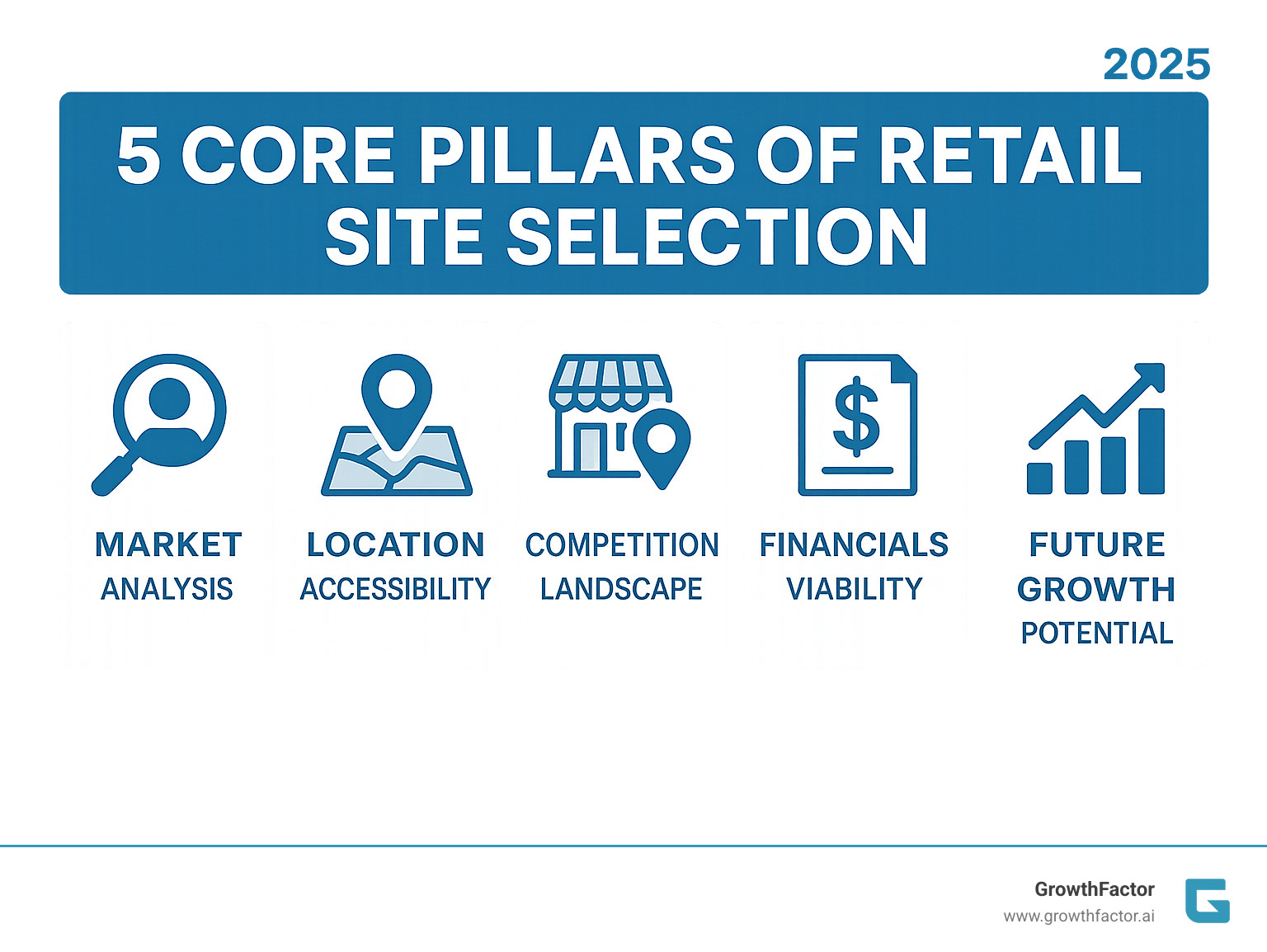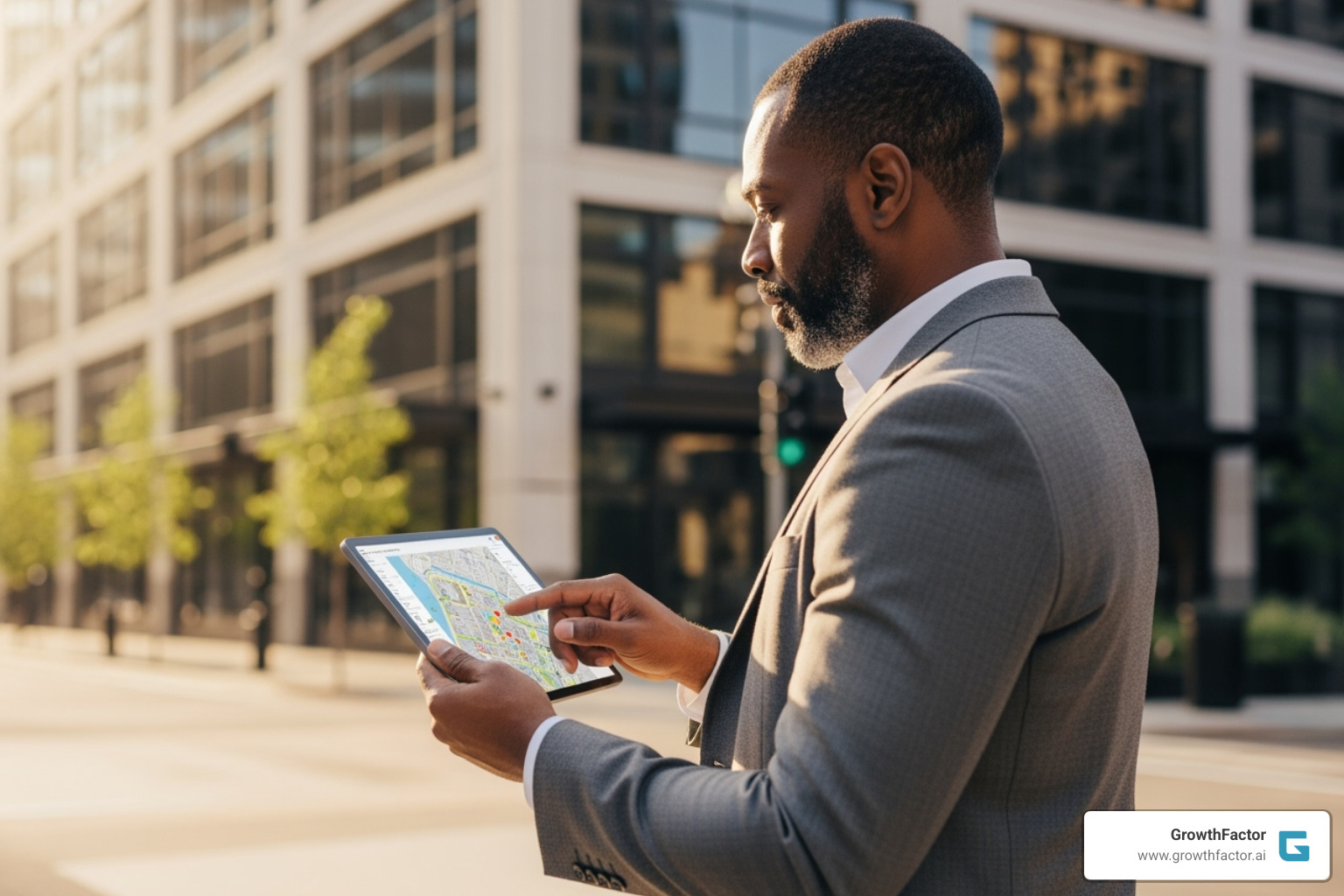Finding Your Retail Sweet Spot: How to Choose Retail Location
Written by: Clyde Christian Anderson
Finding Your Retail Sweet Spot

To quickly understand how to choose retail location, focus on these core pillars:
- Market Analysis: Identify your target customer and understand the local demand.
- Location Accessibility: Evaluate foot and vehicle traffic, visibility, and ease of access.
- Competitive Landscape: Analyze nearby businesses, both rivals and complementary stores.
- Financial Viability: Assess rent, build-out costs, and long-term operating expenses.
- Future Potential: Consider planned developments and the area's growth trajectory.
In retail, the old saying "location, location, location" isn't just a cliché; it's the bedrock of success. Choosing the right spot for your store is one of the most important decisions you'll make. It can make or break your business.
Despite the rise of online shopping, physical stores still account for a huge chunk of sales. In fact, brick-and-mortar locations drove 82% of retail sales in the United States in 2024. And 44% of consumers still prefer to shop in-store. This means your physical presence matters. A lot.
A great location brings in customers, builds your brand, and boosts your profits. A poor choice, however, can lead to wasted money, low traffic, and a struggle for survival. It's not just about picking a nice storefront; it's about making a strategic decision that aligns with your business goals.
Clyde Christian Anderson, CEO of GrowthFactor.ai, has spent his career deeply involved in understanding how to choose retail location, drawing from his experience in real estate and finance. This passion led him to found GrowthFactor, aimed at empowering retailers with data-driven site selection.

Must-know how to choose retail location terms:
The Foundation: Why Your Store's Location is a Critical Success Factor
Retail site selection is the strategic process of pinpointing the best physical spots for new stores based on clear-cut criteria like customer demographics, accessibility and proximity to competitors. In other words, the address you pick silently shapes your brand visibility, foot traffic and sales potential.
Brick-and-mortar is still huge: 82 % of U.S. retail sales happen in-store, so the right location can turbo-charge growth while a poor one can stall it. For a deeper dive, see our guide on Retail Store Site Selection.
Understanding Your Customer: The First Step in How to Choose a Retail Location

Start by defining who you want to serve. Quantitative demographics (age, income, family status) tell you where enough qualified buyers live, while qualitative psychographics (lifestyle, values, shopping habits) reveal why they buy. A deep understanding of both is non-negotiable for finding a location where your ideal customers already work, live, and shop. Combine both in a concise customer profile and use local data tools or our Real Estate Data Intelligence to locate areas that already attract those shoppers.
Analyzing the Competitive Landscape
Knowing the neighbourhood is as important as knowing your customer. Map direct and indirect competitors, study their performance and look for “whitespace” – pockets of demand with limited supply. Some competition can help: restaurant rows and fashion districts thrive because clustered stores multiply total foot traffic. Just be sure the area isn’t saturated by a dominant player. Dig deeper with our SWOT Analysis Retail Real Estate.
Analyzing the Physical Location: Key Factors to Evaluate On-Site
- Foot traffic: Count passers-by at peak and off-peak times; focus on quality, not just volume.
- Vehicle counts & ingress/egress: More cars are only an advantage if drivers can enter and exit safely without U-turn gymnastics.
- Accessibility: Adequate parking, walkability and nearby transit stops all widen your trade area.
- Visibility & signage: A clear line of sight and room for compliant signs equal free advertising 24/7.
- Logistics: Easy delivery access and reasonable freight costs protect margins. For more, see Find Retail Space to Increase Sales.
Types of Retail Locations and Their Pros & Cons
| Location Type | Typical Traffic | Cost | Competition | Best For |
|---|---|---|---|---|
| Downtown / High Street | High, walkable | High | Mixed | Boutiques, services |
| Shopping Mall | Very high, weather-proof | Very high | Intense | Fashion, specialty |
| Strip Center | Car-driven, steady | Moderate | Complementary | Convenience retail |
| Freestanding | Destination-based | Variable | Low | Drive-thru, flagship |
Choose neighbours that complement you (coffee next to a bookstore) and negotiate co-tenancy clauses if an anchor leaves. More expansion tips: Retail Expansion: Scale or Stall.
Financial and Legal Considerations
- Rent & lease type: Understand gross vs. net vs. percentage leases and their escalation schedules to accurately forecast long-term occupancy costs.
- Build-out costs: Negotiate landlord contributions or free rent periods to offset the initial investment in fixtures, flooring, and lighting.
- Operating expenses: Budget utilities, CAM, taxes and insurance.
- Regulations: Verify zoning, signage rules and required permits early. The SBA is a good starting point.
- Lease negotiation: Always involve a commercial real-estate attorney. For forecasting help, see Sales Forecasting Tips for Retail Site Selection.
The Future-Proofing Playbook: Technology Meets Long-Term Vision

Modern site selection relies on data-driven decisions. GIS layers foot-traffic counts, demographics and competitor locations onto a single map, while AI-powered predictive analytics forecast sales for each candidate site. Wi-Fi and mobile data reveal true trade areas, replacing old-school radius circles.
Align locations with your long-term strategy: Are you saturating a single metro or planting flagships in gateway cities like Boston and Cambridge? Study city planning documents to avoid future road closures, and consider short-term pop-ups to test new markets.
GrowthFactor’s AI Agent Waldo lets teams vet five times more sites, automate qualification and track deals in one platform. See how in How AI is Revolutionizing Retail Site Selection.
The Step-by-Step Process
- Define goals & customer profile
- Conduct market research
- Short-list promising sites
- Run data analysis
- Visit in person
- Crunch numbers & negotiate lease
- Secure permits and open doors
A fuller walkthrough lives in our Retail Site Selection Process.
Frequently Asked Questions about Choosing a Retail Location
What makes a good retail property?
High visibility, steady foot traffic from your target demographic, easy access (parking or transit), complementary neighbours and a space that fits your brand’s layout needs.
Should I prioritize lower rent or better foot traffic?
Rarely. A cheap site with no traffic is an expensive storage unit. Prime visibility with qualified traffic usually offsets a higher rent through greater sales. Always run a full cost-benefit analysis.
How do I know if an area has enough demand?
Check competing stores’ activity, use data tools to spot underserved “whitespace,” review local growth stats and spend time on the street observing consumer behaviour. Combine data and real-world observation for the clearest picture.
Conclusion
The journey to finding your perfect retail spot truly is a mix of intuition and smart data. Think of it like baking a perfect cake: you need the right recipe (that's your data!) and a good feel for when it's done (that's your intuition!). While your gut feeling and experience are super valuable, today's best approach for how to choose retail location leans heavily on a solid, data-driven strategy.
It's all about making sure your chosen location fits your brand like a glove. It needs to speak to your customers, match their needs, and line up perfectly with your long-term business goals. When you get this right, your store isn't just a building; it's a magnet for success.
A great location isn't just a place to hang your sign; it's a smart investment in your future growth. It impacts everything – from how many people walk through your door each day to how your brand is seen, and yes, even how much money you make. By truly understanding the intricate dance between things like who your customers are (demographics), who your rivals are, how easy it is to get to your store, and the financial side of things, you open up the full power of having a physical shop.
Too, that location choice is an ongoing process rather than a one-time decision. Continually monitor local market shifts, track sales trends, and revisit your data models at least twice a year. Small tweaks—such as adjusting store hours to match commuter patterns or refining your signage after a new road opens—can compound into sizable gains. Pair these incremental optimizations with macro insights from municipal development plans so your site evolves alongside the neighborhood instead of falling behind it.
We truly believe that with the right tools and a clear, step-by-step plan, every business can find its very own retail sweet spot. Ready to see how our amazing AI Agent Waldo can change the game for your site selection and help you pinpoint your next highly profitable location? We'd love for you to explore how AI can find your next profitable location with Waldo.
Citations
The human algorithm
Request Your demo
Schedule meeting
Or submit your information below and we'll be in touch to schedule.



